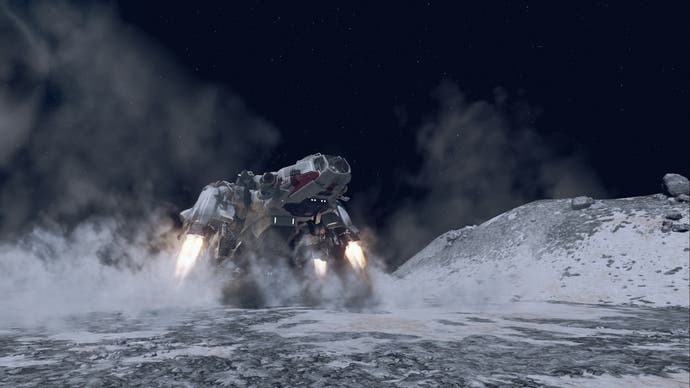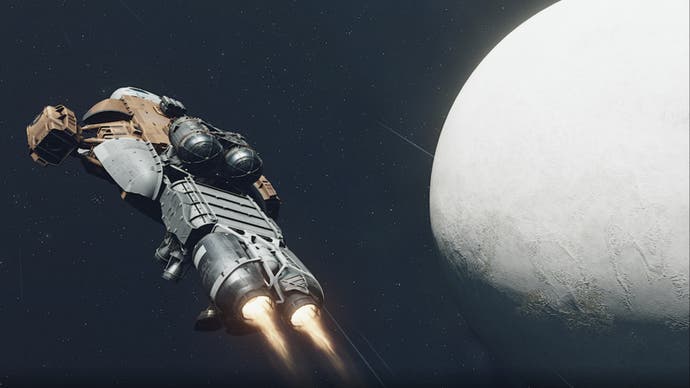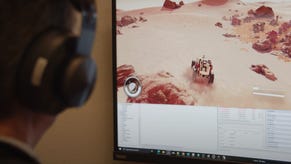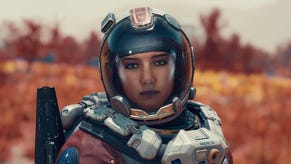By Microsoft's standards, Starfield is a giant leap backwards for accessibility
Bethesda has a lot of catching up to do.
Bethesda's Starfield taps into our innate human instinct to advance, to manifest the future and ultimately discover the meaning of our insignificant existence in the infinite wonders of the universe. If you ask me, Bethesda has the track record of creating incredible fantasy or post-apocalyptic worlds, so the final frontier of space is the perfect next step for them. Starfield transports us to a truly different view of the space genre. The game's "NASA-punk" aesthetic builds on the real history of human space exploration, and delivers a seemingly feasible future of humanity living in the stars.
In other words, Starfield wants to allow players to live their wildest space-faring dreams - those perfect escapist dreams of spreading wings and plunging into zero-g freedom. My character, Quinlan Vos, is the greatest bounty hunter in the universe with equally brilliant combat skills when fighting down on planet surfaces or piloting his ship Vermithor through the cosmos. Quinlan never boards an enemy vessel without equipping his trusty boost pack, Grendel ballistic rifle and Equinox laser rifle. Preparation and the right tools for the job are his key to success.
I'm enjoying Starfield so far, but when we're talking about having the right tools, the biggest problem a lot of players will face comes down to the limited accessibility settings the game comes with. This was a worry for the accessibility community during the buildup to Starfield's arrival, as gameplay trailers, interviews with Bethesda's Todd Howard and the general trickle of pre-release information failed to explore accessibility. Unfortunately, our accessibility worries were rooted in reality.
Accessible design ultimately provides disabled gamers the right tools to tailor gameplay to fit their abilities. You have to start early with this stuff. Thinking about Accessible design shifts your mindset towards truly understanding the functionality of gameplay mechanics, and making them accessible to as many players as possible.
From the off, I discovered that Starfield has unintuitive UI, with menus that are cluttered yet lacking in useful information and detail. For example, when you pick up loot or a new weapon, item details don’t appear automatically, so to make an informed choice as to whether to keep what you've just found, you have to head into your inventory menu to check the details there. Traversing menus is a huge part of Starfield, from managing inventory and ammo types, through fast travelling, to reading your quest log. However it’s often frustrating to navigate and understand.
Elsewhere, combat can be tricky too. The Fallout series featured the innovative VATS targeting mechanic, in which players can pause time and target specific body parts or elements of the world while shooting. VATS enriches the game world whilst making gameplay inclusive. Its time slowing mechanic ensured disabled players did not struggle with the combat, especially when it came to the degree of precision required to manually aim at enemies during stressful real-time fights. Unfortunately, Starfield doesn’t utilise VATS or a VATS-like system. As a result, its fast-paced combat is challenging for many players to handle, especially with the added verticality and movement options gained by the boost pack.

Starfield provides players endless choices to create their perfect character, from the type of background they had and their personality traits to skill proficiencies, but this level of choice isn’t reflected in the game's accessibility menu. It's ironic that a game about the future of humanity was designed using such archaic principles. It’s disappointing that an Microsoft-owned developer like Bethesda would launch a huge game with the type of accessibility you might expect from a game released a decade ago. Over the past few years, Microsoft and Xbox have radically advanced the accessibility field, championing the importance of accessible design. The company has done great work, and in contrast, Starfield is shockingly inadequate.
What is included in the accessibility settings? Starfield offers full button remapping, adjustable difficulty levels, sensitivity sliders and the option to toggle iron sights. These features assist players who find holding down two buttons challenging or need to tailor button placements to meet their abilities. However, the control scheme doesn’t align with accessible design principles. The option for full control remapping doesn’t make Starfield accessible if the default control scheme is already the most practical option, and even then still isn’t good enough in terms of accessibility. For example, if you remap the buttons for shooting, aiming, throwing grenades or scanning to face buttons, players cannot then rely on having simultaneous control of the reticle to accurately direct the trajectory of those actions. For many gamers moving their right thumb back and forth between aiming with the right stick and then pressing a face button is fatiguing, especially in an FPS. Actions such as sprinting and melee are accessed by stick clicks, which are impossible buttons for many disabled gamers to press. There are so many actions to map though, therefore you’re always going to have actions that aren’t easily accessible and need to be mapped to stick clicks anyway.
The biggest issue with the controls is the constant use of the D-pad. During fast-paced gunfights, it’s quite challenging to quickly swap weapons without dying, and this stops many players from switching between the vast plethora of laser, ballistic and energy weapons available to use. You’re able to swap weapons through the pause menu, but this isn’t the ideal solution as it breaks immersion. This D-pad frustration is made worse during ship-to-ship combat, as you need the D-pad to constantly divert power from different ship systems, left and right cycling through the six different ship systems, while up and down increases or decreases power levels. An alternative option for players to control these systems would make space flight or ship-to-ship battles a thrill rather than stressful and fatiguing.

For me, Starfield is a brilliant game with an impressive universe to explore, interesting people to meet, an addictive ship building mechanic to sink hours into and beautiful cities to investigate. This level of immersion is what makes Bethesda games worth waiting for. However, many players will not have the chance to play Starfield without crucial accessibility changes.
In the future, Bethesda needs to learn from the accessibility mistakes of Starfield, to improve the studio's design practices and join the plethora of fantastic Microsoft and Xbox developers who make innovative and accessible games. Let us hope that Elder Scrolls 6 will be the most accessible Bethesda game yet.
Meanwhile, as I wait for that, Quinlan Vos will continue his bounty hunter ways, piloting Vermithor, taking names, venting hulls, researching alien fauna and, most importantly, making credits.









